Manual transmissions are durable but can slip out of gear due to worn components like synchronizers or bearings․ This often results from improper shifting techniques, low transmission fluid, or mechanical wear․ Addressing these issues early is crucial to prevent costly repairs and ensure smooth operation․
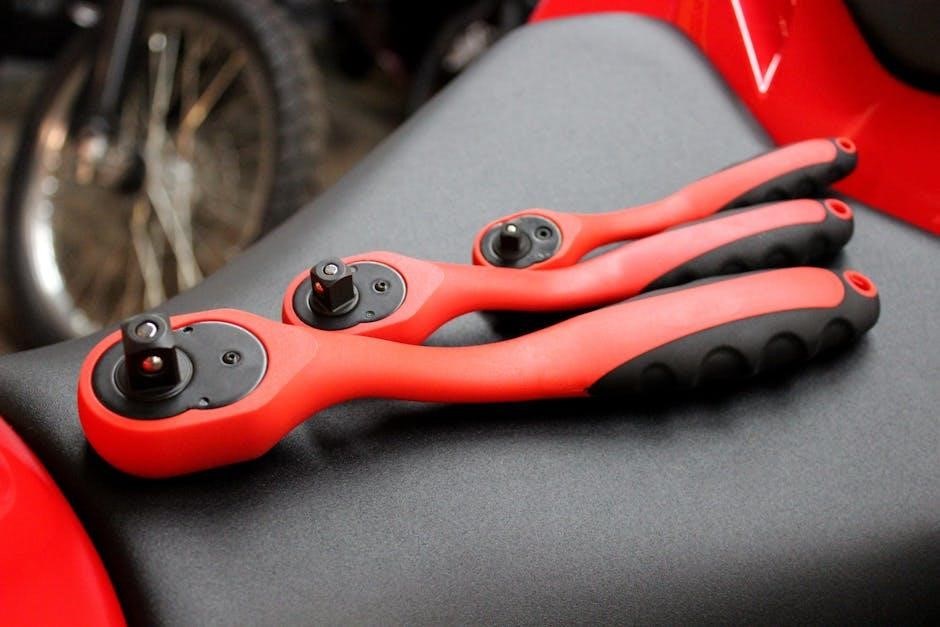
Causes of Slipping
Manual transmission slipping is often caused by worn synchronizers, damaged bearings, or worn gear teeth․ Low transmission fluid levels, improper shifting techniques, or faulty clutch engagement can also contribute to gears disengaging unexpectedly, leading to slippage and poor performance․
Internal Transmission Problems
Internal transmission issues are a common cause of gears slipping out of place․ Worn or damaged synchronizers can fail to engage gears properly, leading to slippage, especially during downshifting․ Additionally, bearings within the transmission can wear out, causing gears to misalign and disengage unexpectedly․ Over time, the gear teeth may also become worn or chipped, preventing the gears from locking into place securely․ These internal problems often stem from high mileage, poor maintenance, or excessive wear on moving parts․ If left unaddressed, they can lead to more severe damage, requiring costly repairs like a full transmission rebuild․ Regular servicing and early detection of these issues are critical to maintaining smooth gear engagement and preventing further complications․
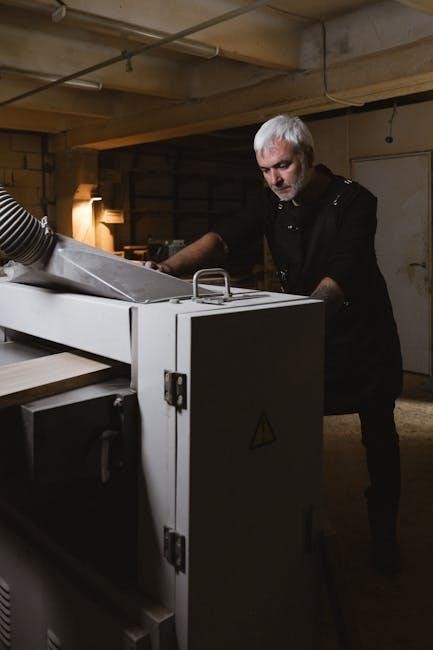
External Factors
Several external factors can contribute to a manual transmission slipping out of gear․ One common issue is improper driving techniques, such as riding the clutch or failing to fully engage gears․ This can cause excessive wear on the clutch and transmission components․ Additionally, aggressive shifting, especially when downshifting, can put unnecessary strain on the gear engagement mechanism․ Another external factor is loose or damaged shift linkage, which can prevent the gears from locking into place properly․ Environmental conditions, such as extreme temperatures, can also affect transmission performance by altering the viscosity of the transmission fluid, leading to poor gear engagement․ Furthermore, incorrect transmission fluid levels or using the wrong type of fluid can reduce the system’s ability to maintain proper gear contact․ Lastly, external mechanical stress, such as towing heavy loads or driving in hilly terrain, can exacerbate wear on the transmission․ Addressing these external factors can help prevent gear slippage and ensure smoother operation․
Symptoms to Watch For
Common signs include the car revving without accelerating, delayed gear engagement, and gears disengaging unexpectedly․ You may also notice grinding noises, difficulty shifting, or the transmission slipping into neutral․ These symptoms indicate potential issues that need immediate attention to prevent further damage․
Common Indicators
One of the most noticeable signs of a manual transmission slipping out of gear is the car revving higher than expected without a corresponding increase in speed․ This can happen during acceleration or when climbing a hill, making the vehicle feel unresponsive․ Another common indicator is the transmission unexpectedly shifting into neutral, especially when decelerating or downshifting․ Drivers may also experience difficulty engaging gears, with the shifter feeling loose or unresponsive․ Additionally, unusual noises such as grinding or whining sounds during gear changes can signal underlying issues․ In some cases, the car may jerk or hesitate when shifting, indicating poor synchronization between gears․ These symptoms often worsen over time if left unaddressed, leading to more severe problems like complete gear disengagement or transmission failure․ Recognizing these indicators early allows for timely repairs, preventing further damage and ensuring the transmission operates smoothly․
Noises and Vibrations
Noises and vibrations are key indicators of a manual transmission slipping out of gear․ A common sound is a whining or grinding noise during acceleration or when shifting gears, which often signals worn bearings or damaged synchronizers․ Additionally, a clunking or rattling noise may occur when the transmission slips in and out of gear, especially under load․ Vibrations can also accompany these issues, making the driving experience uncomfortable․ These noises often intensify as the problem worsens, indicating internal wear or misalignment of gears․ Ignoring these signs can lead to more severe damage, such as gear teeth wear or complete gear disengagement․ Addressing the root cause promptly is essential to prevent further deterioration and costly repairs․ Regular maintenance, such as checking transmission fluid levels and inspecting internal components, can help identify and resolve these issues early․ By paying attention to unusual sounds and vibrations, drivers can take proactive steps to ensure their manual transmission operates smoothly and reliably․
Performance Issues

When a manual transmission slips out of gear, it can significantly impact the vehicle’s performance․ One common issue is hesitation or a lack of acceleration, especially when trying to pick up speed․ This can make the driving experience feel sluggish and unresponsive․ Additionally, the engine may rev higher than normal without a corresponding increase in speed, leading to poor fuel efficiency and increased wear on the engine․ Another performance issue is the inability to maintain a consistent speed, as the transmission may slip in and out of gear unexpectedly․ This can be particularly problematic during uphill climbs or when merging onto busy highways, where consistent power delivery is crucial․ Over time, repeated slipping can also lead to increased wear on the clutch and other transmission components, further exacerbating the problem․ Addressing these performance issues promptly is essential to restore the vehicle’s responsiveness and ensure smooth, reliable operation․ Ignoring them can result in more severe damage and higher repair costs down the line․
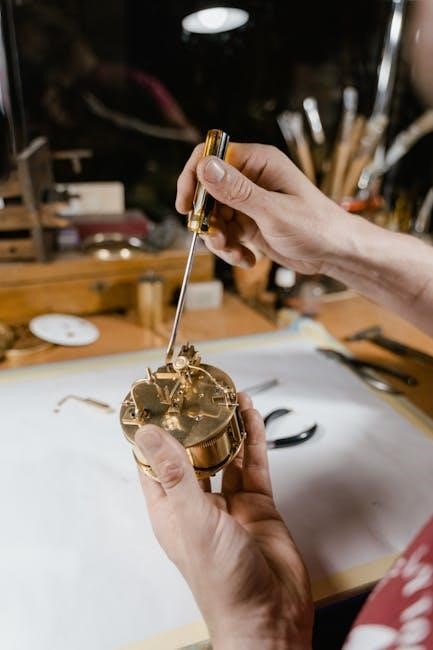
DIY Fixes and Solutions
Check and change transmission fluid to ensure proper lubrication․ Inspect and replace worn shift bushings or linkage components․ Adjust or replace the clutch if worn, as it can cause gears to slip․ These steps can help restore smooth gear engagement and prevent further damage․
Fluid Checks and Changes
Regular fluid checks are essential for maintaining manual transmission health․ Low or dirty transmission fluid can cause slipping, as it fails to lubricate gears properly․ Always use the recommended fluid type, as specified in your vehicle’s manual, to ensure optimal performance․
To check the fluid, locate the transmission fluid dipstick, typically found under the hood․ Wipe it clean with a rag, insert it back, and pull it out again to get an accurate reading․ The fluid level should be between the “MIN” and “MAX” marks․ If it’s low, top it up with the correct fluid type․
Change the transmission fluid every 30,000 to 60,000 miles, depending on your vehicle’s manufacturer recommendations․ Old or contaminated fluid can lead to premature wear on gears and synchronizers, increasing the risk of slipping․ When changing the fluid, drain the old fluid completely and replace the filter if applicable․
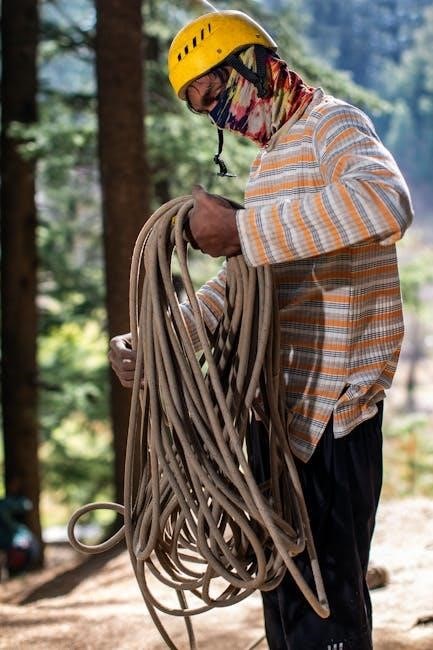
Additionally, inspect the fluid for signs of contamination, such as metal shavings or dark discoloration․ If you notice these, it may indicate internal damage, requiring professional attention․ Regular fluid maintenance is a simple yet effective way to prevent slipping and extend the life of your manual transmission․
Adjustments and Replacements
Adjustments and replacements are critical steps in addressing manual transmission issues․ If slipping persists after fluid checks, inspect the shift linkage and mounts for wear or looseness․ Tightening loose connections or replacing worn bushings can often resolve the problem․
The clutch system is another area to examine․ A worn clutch or faulty clutch cable can cause gears to slip, especially when accelerating․ Replacing the clutch or adjusting its engagement point may be necessary to restore proper gear engagement․
In more severe cases, internal components like synchronizers or bearings may need replacement․ Synchronizers, which facilitate smooth gear transitions, can wear out over time, leading to slipping․ Replacing these parts requires disassembling the transmission, a task best left to professionals․
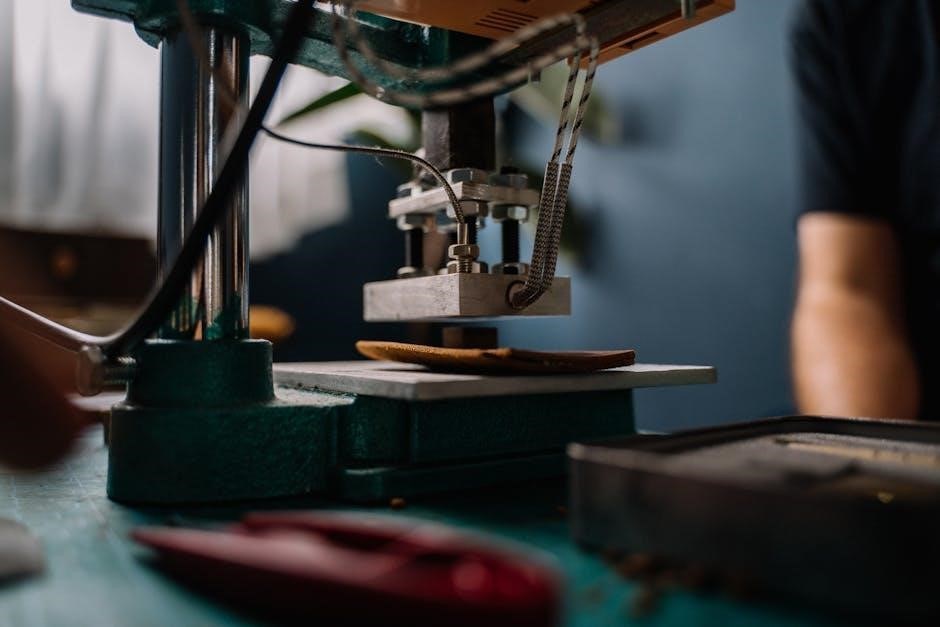
Additionally, damaged gear teeth or a worn shift fork can cause gears to disengage․ These issues often require precise adjustments or outright replacement to ensure proper gear alignment and engagement․ Regular inspections and timely replacements can prevent minor issues from escalating into major repairs․

Professional Repair Options
Professional repair options for a slipping manual transmission often involve a transmission rebuild or bearing replacement․ These procedures require specialized tools and expertise to ensure proper gear alignment and engagement, restoring smooth operation and preventing further damage․
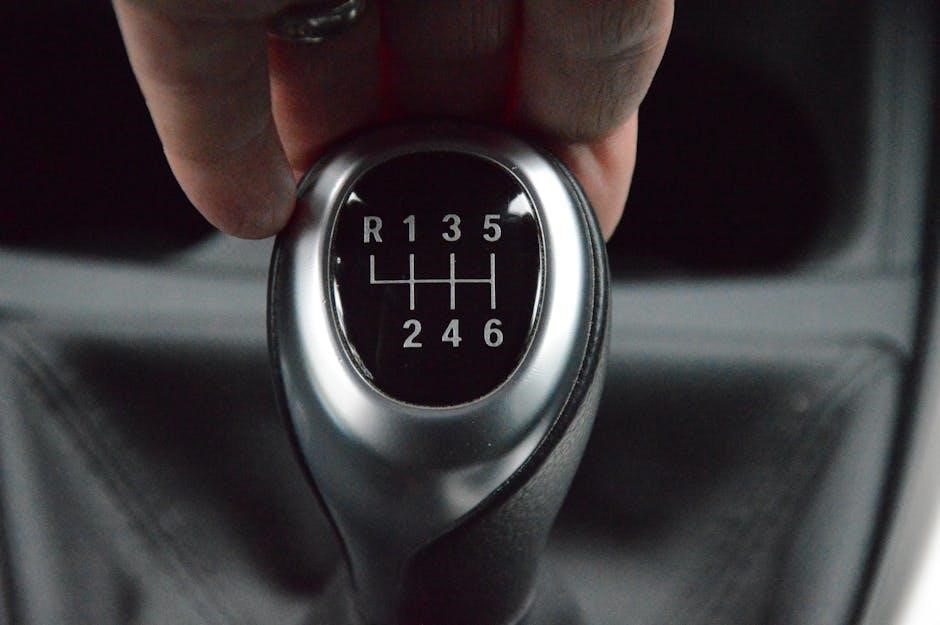
Transmission Rebuild
A transmission rebuild is a comprehensive solution for addressing gear slippage in manual transmissions․ This process involves disassembling the transmission to inspect and replace worn or damaged components such as bearings, gears, and synchronizers․ Skilled mechanics clean and reassemble the unit, ensuring all parts are properly aligned and lubricated․ A rebuild restores the transmission to optimal condition, eliminating slippage and improving overall performance․ It’s a cost-effective alternative to replacement, especially for high-mileage vehicles․ However, the process is labor-intensive and requires specialized tools and expertise․ If DIY isn’t an option, consulting a professional is recommended to guarantee quality and reliability․ A successful rebuild ensures smooth shifting and extends the transmission’s lifespan, making it a worthwhile investment for drivers experiencing persistent gear issues․
Bearing Replacement
Bearing replacement is a critical step in addressing manual transmission issues, particularly when gear slippage is present․ Worn or damaged bearings can cause gears to misalign, leading to slippage and poor engagement․ Replacing these bearings ensures proper gear alignment and smooth operation․ The process typically involves removing the affected bearings, cleaning the housing, and installing new ones․ Bearings are essential for reducing friction and supporting the gears during shifting․ If neglected, worn bearings can exacerbate gear damage, making the problem more severe․ While bearing replacement can be done as part of a transmission rebuild, it’s often more cost-effective to address it early․ However, this requires specialized tools and mechanical expertise․ Improper installation can lead to further issues, so consulting a professional is highly recommended․ Regular maintenance, such as checking for unusual noises or vibrations, can help identify bearing wear before it causes significant damage․ Addressing bearing problems promptly ensures reliable transmission performance and prevents costly repairs down the line․
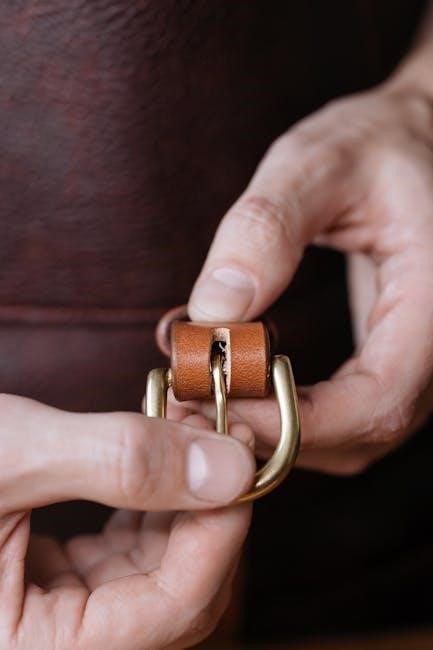
Preventative Maintenance
Regular servicing, fluid checks, and proper driving techniques are essential for preventing manual transmission issues․ Avoiding aggressive shifting, maintaining the correct fluid levels, and addressing worn components early can significantly reduce the risk of gears slipping out of gear over time․
Regular Servicing and Driving Techniques
Regular servicing is crucial for maintaining the health of a manual transmission․ This includes checking and changing the transmission fluid, inspecting for leaks, and replacing worn-out components like shift bushings and synchronizers․ Proper driving techniques, such as avoiding aggressive shifting and not resting your hand on the gearshift, can also prevent unnecessary wear on internal parts․ Additionally, ensuring the clutch is fully engaged before shifting gears and avoiding riding the clutch can reduce strain on the transmission․ By combining these practices, drivers can significantly extend the lifespan of their manual transmission and minimize the risk of gears slipping out of place․ Consistent maintenance and mindful driving habits are key to a smooth and reliable shifting experience․
